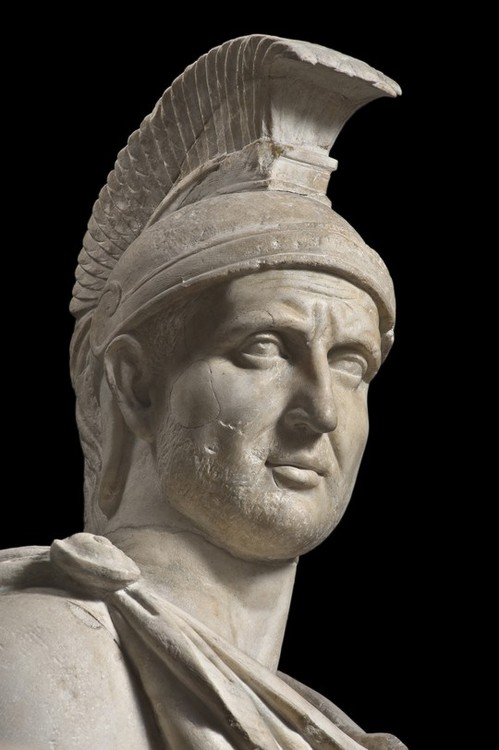As we draw near the publication of the second Colossus novel, I thought I'd start laying the groundwork by offering some info about Roman legions. This will all be in an appendix to COLOSSUS: THE FOUR EMPERORS, but I present it here as a cheat sheet:
 A Roman Legion was
A Roman Legion was
made up of about 5,500 men. The core unit of a legion is the century.
Originally a century, as its name suggests, was made up of 100 men. But by the
late Republic and early Empire it was actually 80 soldiers and their support
staff.
Eighty men make a century. Six centuries make a cohort. Ten cohorts make a legion, with the lead cohort being
double-sized. That’s 5,280 men. Add 120 cavalry men and around 100
noncombatants – engineers, cooks, etc. – and you reach 5,500.
Each legion had a golden
eagle, the aquila, carried by the aquilifer. They also had a flag with
their symbol on it. The flag was called a signum,
or a vexillum, and was carried by the
vexillifer. Sometimes a legion would
detatch a smaller unit. When this happened, the main legion would keep the
eagle, while the detatchment marched out under the vexillum. Thus the name for
the detatchment became a vexillation.
Legionaries were
supposed to be citizens, but by this time recruiting standards were winked at.
Many locals were recruited with the promise that if they served Rome well for between
sixteen and twenty-five years, they would retire as full Roman citizens.
Some common terms to
do with legions:
Legate
(legatus) – Either the legion’s
commander-in-chief, or else senior commanders under a specific general. For
example, Titus is senior legate of the Fifteenth Legion, under the command of
his father Vespasian, who oversees several legions. A legate was usually a
senator or from a senatorial family, as leading a legion was often a large part
of climbing the cursus honorum, the 'path of honour'.
Tribune of the
Soliders (tribunus
militum) – Not to be confused with Tribune of the Plebs, whose veto power
had by this point been absorbed by the Princeps. A military tribune was a staff
officer, often in his twenties. The term originates from Rome’s earliest days,
when each of Rome’s tribes would send a representative to be a junior officer
in the army. Usually 6 tribunes to a legion, the most senior of whom was second
in command to the legate.
Centurion
(centurio) – Professional, career
officer, the backbone of the Roman army. He could be elected, appointed, or
promoted from the ranks. Caesar promoted men of valour, and many historians
record centurions as being the first over a wall. The most wounded, most
decorated, most valuable element in a legion. A general would think nothing of
losing all his tribunes, but weep outright if he lost a centurion. 60-66
centurions in any legion (depending on the breakdown of the extra men in the
first cohort).
Optio
– A centurion’s right-hand, carrying out orders and enforcing discipline.
Basically a centurion in training. 60-66 optios to a legion.
Decurian
– Cavalry commanders. A legion’s cavalry was divided into four units of 40
horsemen, so 4 decurians to every legion.



a fun refresher from 2nd year Latin (Caesar’s Gallic Wars)! Looking forward to reading the next Colossus novel.
Looking forward to sharing it!